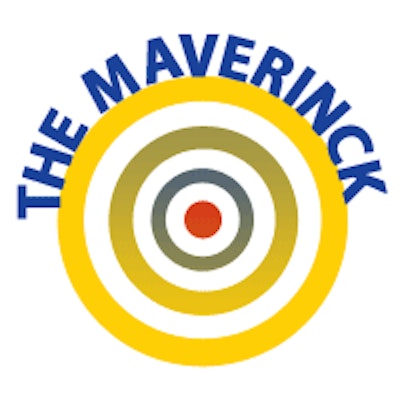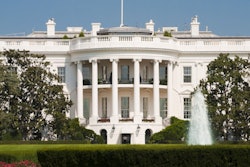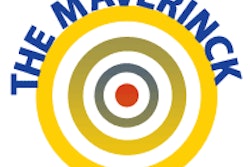
One sunny morning in mid-August 1982, I packed my suitcase, put it in the trunk of my car, and drove from Stony Brook on Long Island through New York City, then north to Boston. I was going to attend the first meeting of the Society of Magnetic Resonance in Medicine (SMRM); my erstwhile boss, Dr. Paul C. Lauterbur, PhD, was the president of both the society and the conference. The new organization was meant to embrace scientists from all fields and rapidly developed into "THE scientific MR society."
 Dr. Peter Rinck, PhD, is a professor of diagnostic imaging and the president of the Council of the Round Table Foundation (TRTF) and European Magnetic Resonance Forum (EMRF).
Dr. Peter Rinck, PhD, is a professor of diagnostic imaging and the president of the Council of the Round Table Foundation (TRTF) and European Magnetic Resonance Forum (EMRF).Following the Boston meeting, some European members of SMRM working in the U.S. decided to start an educational effort in Europe that later would be known as the European Magnetic Resonance Forum (EMRF) Foundation -- today part of The Round Table Foundation (TRTF). EMRF also helped to build up and strengthen the European Society for Magnetic Resonance in Medicine and Biology (ESMRMB). Today, this society is run and managed as a daughter organization of the ECR in Vienna.
After its very successful first conference, SMRM went from strength to strength. Becoming a member required passing a strict vetting process; only people involved in research with a good track record were accepted. Mere users of MRI (i.e., radiologists) enrolled in a second society, the Society of Magnetic Resonance Imaging, (SMRI). After being marred by a financial scandal and pressured by companies, in 1994 SMRM and SMRI merged to form SMR, later renamed ISMRM, the International Society for Magnetic Resonance in Medicine.
This changed the original society completely. Dr. Gerald Pohost, founding member of SMRM, was disillusioned: "In my opinion, the society ended at the time it merged with the other society."1 It wasn't a scientific society any more. The ISMRM office became one of the many big commercialized congress and course enterprises, well organized and run smoothly by a strong, financially oriented management.
Roberta A. Kravitz became its executive director in 1995. In an interview last year, she stated:
People expect more for their money now. They are all under tight budgets. There are so many choices out there and you want to keep them with [your association]. You've got to constantly evaluate the benefits of membership and find ways to enhance them.2
Thirty-two years after the Boston meeting, this year's annual meeting of ISMRM was held last week in Milan -- together with the European Society, which was nearly invisible.
In the commercial prospectus of the Milan conference, the contents of the meeting are not mentioned at all ... nor are the names of any scientist, officer, or even the president of the society. "Scientific" officers and presidents of these societies are often mere figureheads.
According to the prospectus, the commercial aim of the meeting is: "Real-time exposure to decision-makers -- unlimited networking opportunities with a growing international assembly of the world's largest community of MR scientists, clinicians, and technologists -- an engaged, receptive, and qualified audience providing you with immediate and future suspects, prospects, leads, and confirmed business."
I wonder who are the "future suspects?"
During the last 35 years I have attended hundreds of meetings between New York and Tokyo, Berlin and Moscow. I have been president of learned societies and conferences, but I have never seen so many frustrated and furious participants and would-be participants as at the meeting in Milan, ranging from old-timers to young scientists and company researchers.
There was no congress bag, and instead of a printed program, there was a USB dongle strangely depicting a car and containing the abstracts and a layout of the poster exhibition; easy and cheap, no doubt. However, the entrance fee was steep; the highest fee was close to $2,000.
A European member of the congress organizing committee regretted that he couldn't pay for junior members of his team; even the one-day fee would go beyond the limits of his budget.
Increasing consternation and anger was also voiced about the collection and sale of personal and professional data of the members and congress participants, research and scientific data, and background information on institutions.
All societies in this class enter the political arena and begin to cement their status by issuing diplomas and certificates, trying to monopolize the field and getting state backing. Science and education take a back seat to commerce.
I heard through the grapevine that a cardiological society has 70 million euros on its accounts -- perhaps even "a little more." I don't know whether this is true, but my imagination is racked: what for, where from? Who checks it? What about the accounting of other societies? "Honi soit qui mal y pense" -- "Shame on him who thinks this evil."
At an ad-hoc meeting of some of the former officers and presidents of the organizing societies, discussion focused on the problems of the ISMRM and other societies and possible new ways of meeting organization, but no general consensus or solution was found. There is a strong wish for biennial conferences, and even five-year intervals were considered, which fits the major steps of progress in the field. An industry exhibition was considered unnecessary because there are major trade fairs at the annual meeting of the RSNA, the ECR, and Arab Health. Instead, small meetings of manageable size and cost on a national or regional basis were proposed where participants can have a real exchange of ideas and results.
A major worry is the ever increasing number of new congresses and societies in fashionable subdisciplines; this spring, for instance, every other week there was a conference dealing with contrast agent development, many of them trading under the name "molecular imaging."
One of the participants brought it down to: "This conference is quite expensive -- too expensive just to attend and learn anything new, too expensive to be a social meeting. It's one of the many societies you don't identify with. It's just another supermarket. However, if I have to show relevant new data I will go. Use them as they use us."
In other words, if one knows and understands this background, these conferences can be helpful; but they do not replace independent and truly academic and scientific meetings -- the old-style family meetings.
The ISMRM is not the only example of this negative development. Last year, the ECR was the target of a massive attack about fees -- and this year again, indignation among the participants could be felt. There is nothing left from the look into the future in 1997:
For a mere 500 Austrian schillings (approximately 70 Deutsch marks) per year, the conference fee of ECR members is substantially lowered. Ultimately it is expected that they will pay no fee at all. Members also receive a newsletter, the abstracts of the ECR (if they attend or not), and the journal European Radiology.3
Those were the days -- but it seems to be too late to turn the wheel back.
Dr. Peter Rinck, PhD, is a professor of diagnostic imaging and the president of the Council of the Round Table Foundation (TRTF) and European Magnetic Resonance Forum (EMRF).
The comments and observations expressed herein do not necessarily reflect the opinions ofAuntMinnieEurope.com, nor should they be construed as an endorsement or admonishment of any particular vendor, analyst, industry consultant, or consulting group.
References
- Dawson MJ. Paul Lauterbur and the invention of MRI. Cambridge, MA, U.S. and London: The MIT Press; 2013:151.
- Russell M. An online platform that really resonates with members. Convene website. www.pcma.org/convene-content/convene-article/2013/08/06/an-online-platform-that-really-resonates-with-members. August 2013.
- Rinck PA. The European Congress of Radiology -- A European success story. Diagnostic Imaging Europe. 1997;13(7):17-18.



















